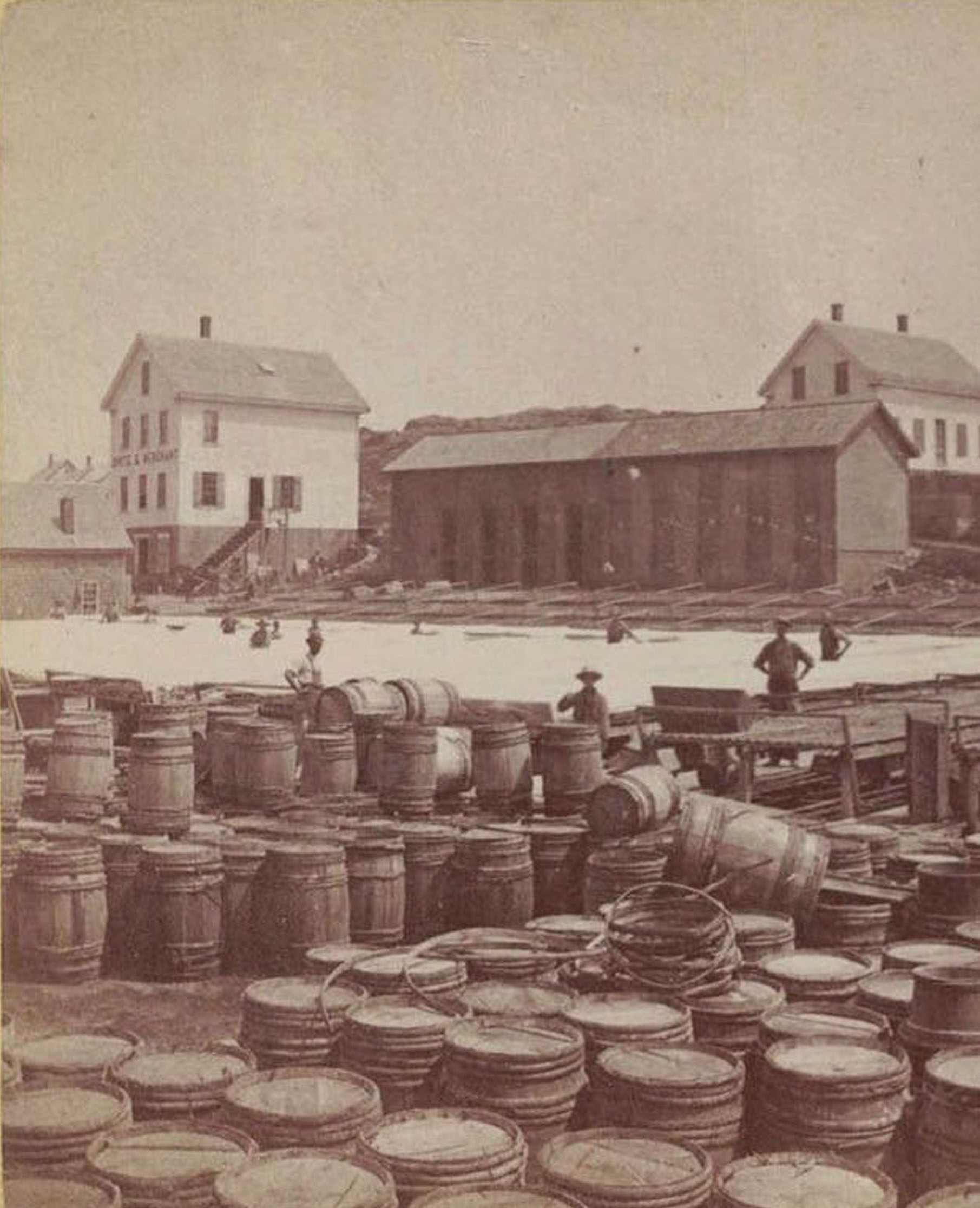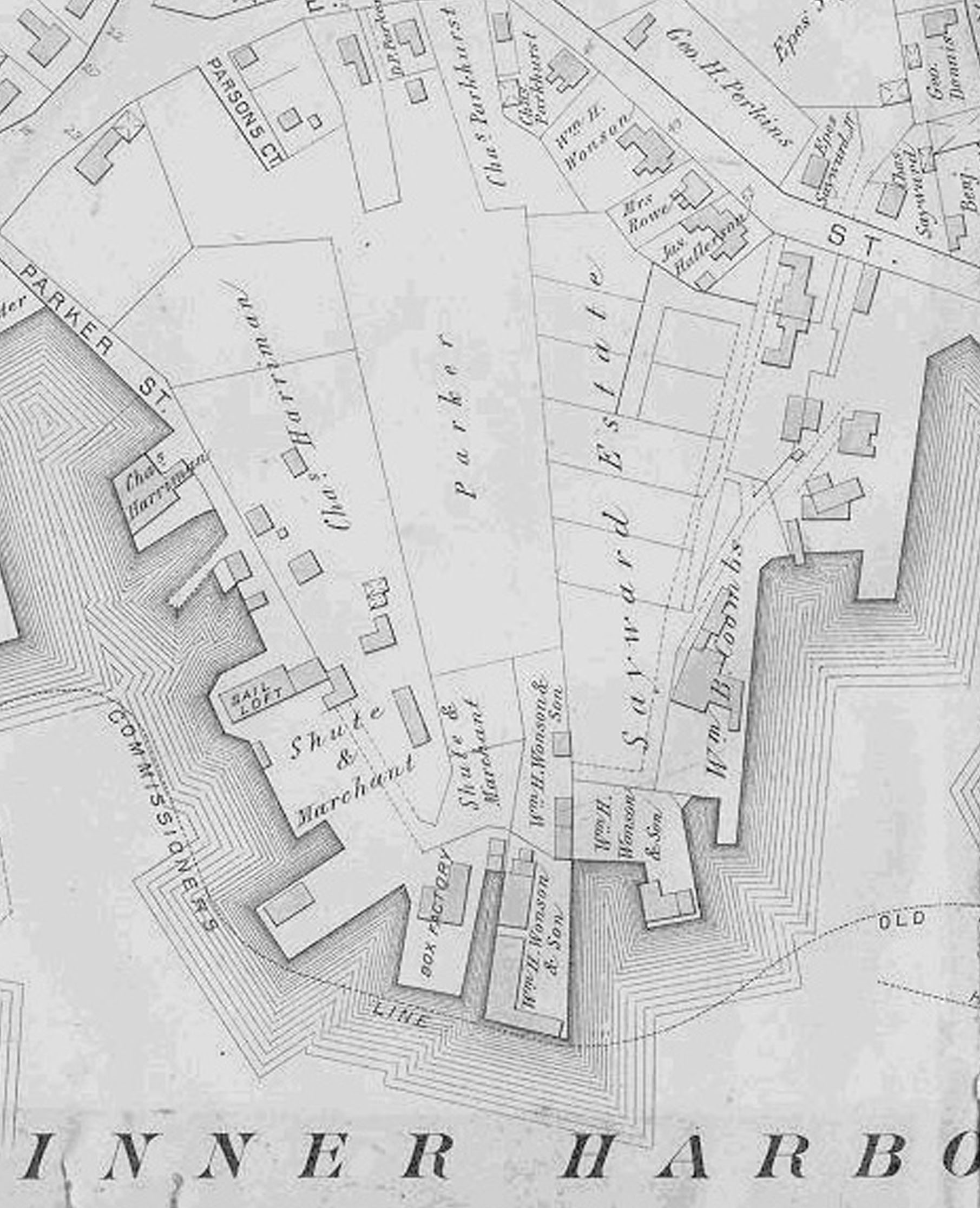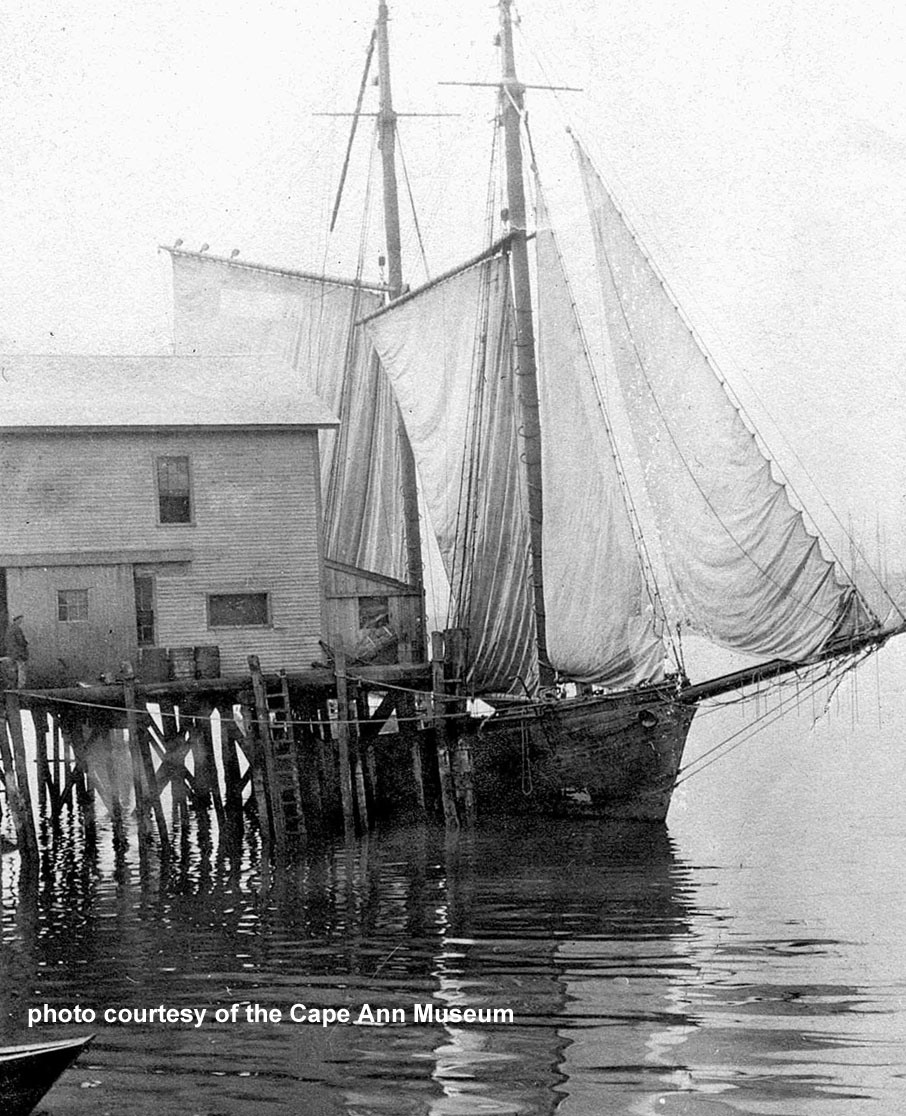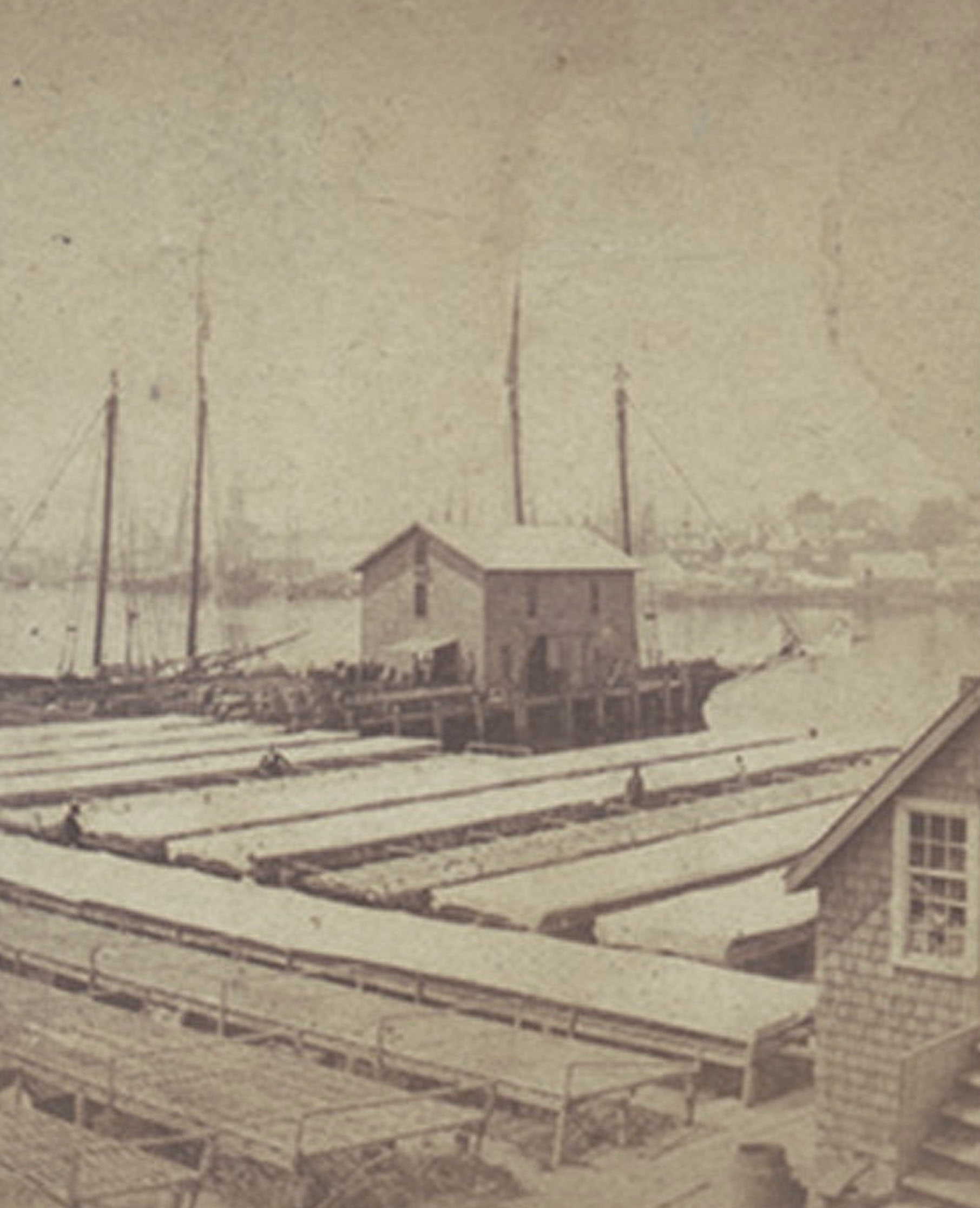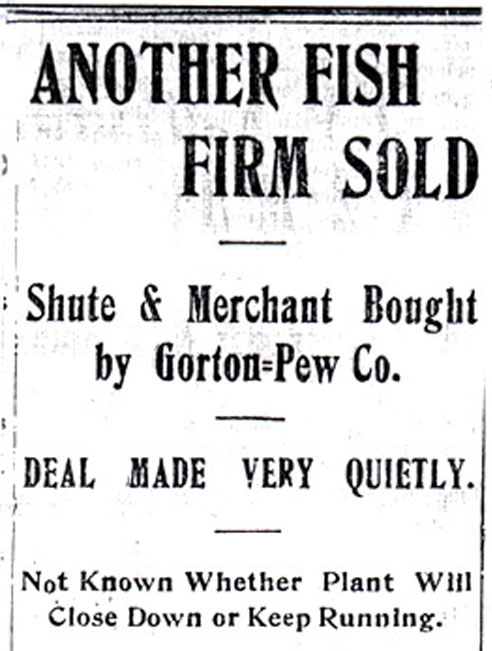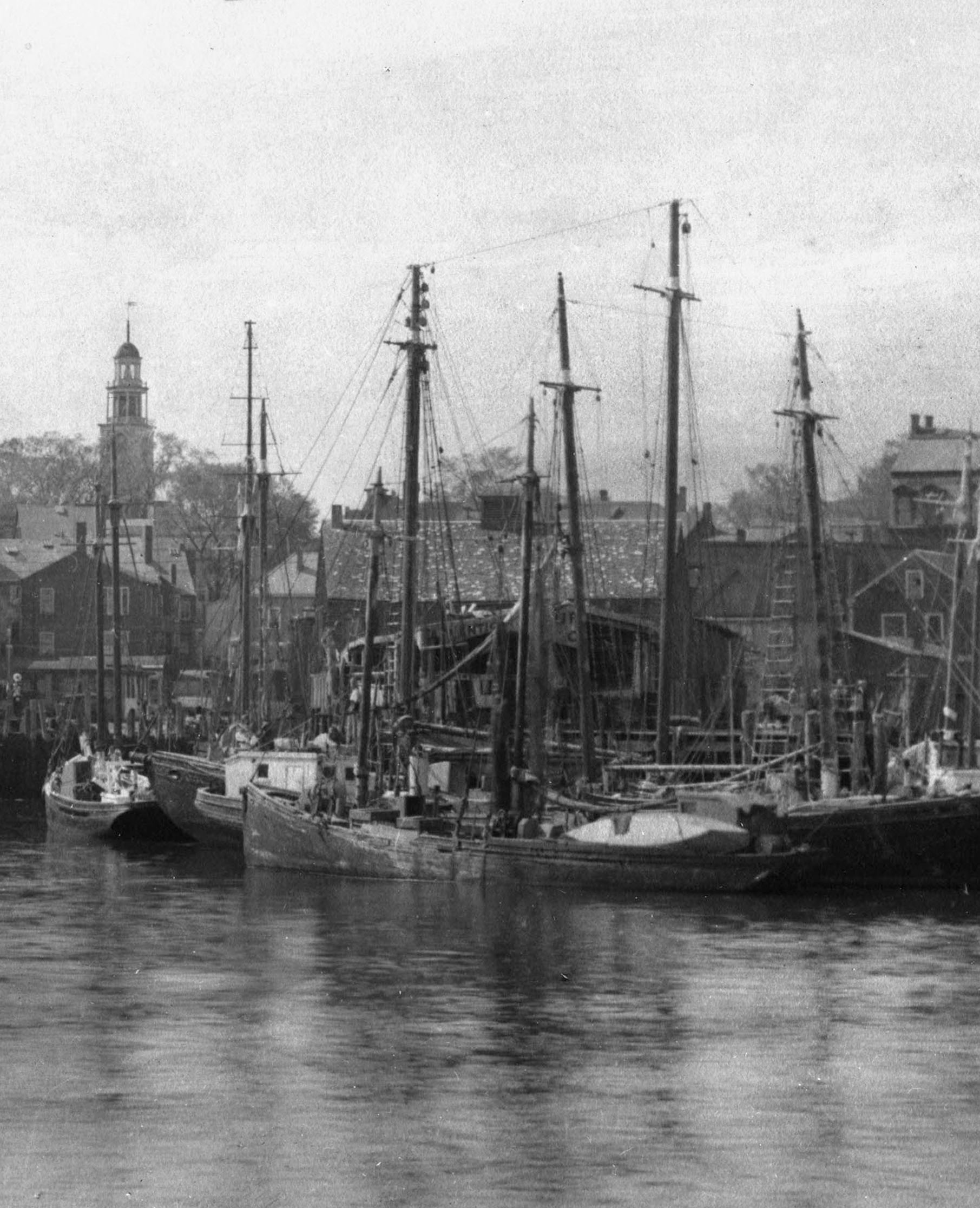Shute & Merchant
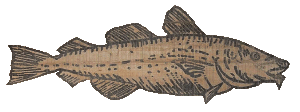
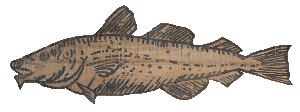
the history
Shute & Merchant, started by James L. Shute and his brother-in-law, William T. Merchant, was officially declared to be in operation on December 18, 1861 via a public announcement published in the Gloucester Telegraph and News. The company remained an integral part of the fishing industry from 1862 until 1907, when the company became part of the Gorton-Pew Fisheries Company (now Gorton's of Gloucester).
This, however, was not the first fish business related to this branch of the Merchant family located on that piece of land at the head of the harbor. In the early 1800's members of the family moved from Pigeon Cove and began a small fishing enterprise at this same location. Later, one of those sons, Epes Merchant, operated a fishing business under the name of Epes Merchant and Son. He was joined at this time by his son Epes W Merchant (a well-respected sea Captain and later, a banker). Later, three of his other sons, Addison, Gorham and Samuel, took over and maintained the business until the late 1850's, at which point William T. Merchant and James L. Shute joined Samuel, their father and father-in-law respectively, in the fishing trade. After Samuel's death, the two younger men chose to continue in the business under the name of Shute & Merchant.
Shute & Merchant was built on what was known as the "Land at the Head of the Harbor", which was located off of Parker Street. That portion of land is now part of the State Pier. The remaining Shute & Merchant buildings were razed in the 1930s to make way for the new State Pier.
The Shute & Merchant's wharf was also home to the Lewis H. Merchant Box Company, which was eventually known as the Merchant Box Company, before it relocated to a large location at Cleveland & Willow Streets.
The original fish and fitting out loft eventually became the home of a net and seine repair business run by George Merchant, Jr. (the Merchant name was often spelled as Marchant … even for the different branches of the family.) That seine and net firm eventually became the J. Arthur Woodbury enterprise. He was the grandson of George Merchant, Jr. -- map image: used courtesy of the late Roberta Sheedy (her Out of Gloucester website -- http://www.downtosea.com/ -- is a great tribute to the Gloucester fishermen, especially those lost at sea.)
(click on the image to learn more)
Shute & Merchant initially operated its own small fleet of fishing vessels when it first began, as did most fish companies at that time. At the height of this period of the business in 1874, the firm owned 13 vessels. As with many other fish firms with fleets of vessels, one of the buildings on their wharf was the fitting out loft.
When Epes Merchant, the ancestor who seems to have been key to the beginning of Shute & Merchant, left his role as an active fisherman to become an outfitter. As an outfitter the business might have caulked and graved (coated with pitch to create a glossy surface), repaired/replaced rigging and sails, anchors and ropes, replenished bait, butts, wash barrels and provisions (molasses, fat pork, flour, hard crackers, water, perhaps some rum, tinder and homemade matches).
Later this fitting out building was taken over by the seine and net repair business started by George Merchant, Jr., a cousin of Wm. T. Merchant. George had begun his career working aboard fishing vessel, and became a highly respected Captain before retiring to a job that would keep him on dry land.
One of the hundreds of stereoview cards published by the Procter Brothers, was a scene of the Shute & Merchant flake yards, and across to the fitting out loft. The areas of white covered tables in this image were where the split and salted fish was placed to dry in the sun. Shute & Merchant had about 2000 feet of flake yards on their wharf.
Every business in Gloucester at this time, involved with the preparation and packing of fish, needed large flake yards. Drying the fish was a key step in preparing the fish to be packaged for the market. During the height of the summer season, Shute & Merchant employed about 200 workers, and part of these employees were responsible for the loading. covering and unloading of the flakes.
(click on the image to learn more)
(click here to see more stereoviews of Gloucester and Cape Ann)
In the spring 1907 this news came as a surprise to the Shute & Merchant employees, as well as the rest of Gloucester. The previous year, John Pew & Son, Slade Gorton, Reed & Gamage and the David B. Smith fish companies had merged in to one large enterprise, the Gorton-Pew Fisheries company. Benjamin A. Smith, the son of David B. Smith, was a good friend of William T. Shute, and this may have been instrumental in the decision of Shute & Merchant to accept an offer to merge with Gorton-Pew the following year. That relationship might also explain why the deal had been made very quietly.
Portions of the Shute & Merchant plant remained in operation, at least for a time, and were under the supervision of William T. Shute after the merger with Gorton-Pew. Half of his work each year was to serve as the president of the Merchant Box Company.
Officially, the papers for the purchase Shute & Merchant were signed by William T. Shute and Benjamin A. Smith on Oct. 25, 1907, however the initial plan and terms were written out in May of that year.
(click on the image to read the article)
(learn more about the sale of Shute & Merchant)
Gloucester Harbor


the fishing industry
Gloucester Massachusetts, 42.6158° N, 70.6625° W, was originally called Beauport. From very early on in its history, this city was well-known for its fishing industry, an industry said to date back to 1623. History notes that 14 members of a crew of an English fishing craft were left behind in Gloucester, and that a year later the same vessel returned and left 32 of their crew behind. That same year the very first wharf, or stage as it was called then, was built in Gloucester by members of the Plymouth Colony. That group also provided the very first fishing vessel belonging to Gloucester.
According to the 1882 Gloucester City Directory there were 76 firms/businesses listed under "Fisheries" in the business section sharing the harbor with Shute & Merchant. By 1899-1900, there were 43 fish firms specifically dealing in salt-water fish.
Since the start of the fishing industry here, the Gloucester Harbor and Gloucester fishing industry has gone through a variety of changes. Some exciting … some challenging. Over the years, the types of vessels has changed dramatically, and many good men and women sacrificed their lives to the sea in their effort to bring home the fish.
